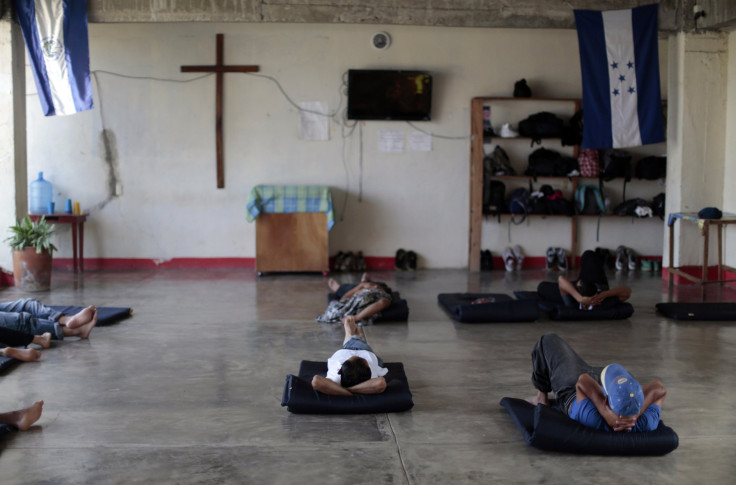Border Crisis: Child Migrant Numbers Declined In July

Two months after President Obama highlighted the surge of unaccompanied child migrants as an “urgent humanitarian situation,” the number of Central American migrants crossing into the U.S. seems to be dropping.
According to the Department of Homeland Security, Border Patrol agents apprehended 5,508 unaccompanied child migrants at the southwest border in July, about half as many as the figures for June and July. Apprehensions of family units, which have soared over the past year, also fell to 7,410 in July, down from 16,330 in June and 12,774 in May.
This decline prompted the federal government to close down three of the temporary migrant shelters it had set up earlier this year to accommodate the influx of child migrants. The shelters at Lackland Air Force Base in Texas, Fort Sill in Oklahoma, and the Naval Base Ventura County in California are all in the process of shutting down.
Homeland Security Secretary Jeh Johnson attributed the falling numbers to an aggressive U.S. enforcement campaign against the influx of Central American migrants. Since the numbers of migrants entering into the U.S. through the southwest border hit a crisis point this year, Obama administration officials launched an ad blitz in Central American countries to deter parents from sending their children up north, and launched “Operation Coyote,” a crackdown by Immigration and Customs Enforcement agents against human smugglers who bring migrants through Mexico to the Texas border. The Department of Homeland Security reported in late July that the operation had led to the arrests of 192 smugglers.
In recent months, U.S. authorities have also begun to expedite immigration court hearings for Central American migrants, moving their cases to the front of court dockets and ramping up deportation flights. Government officials have said that these moves are attempts to counter rumors of U.S. leniency that have played a part in fueling the surge of migrants into the country.
But a one-month trend is not a clear indicator of a long-term decline, and there are several other factors that could account for a temporary dip in migrant arrivals. Scorching summer temperatures are one explanation: According to trends based on Customs and Border Patrol statistics, migration numbers generally peak around the spring months of February, March and April, while falling during the summer because of the lethal effects of extreme heat along the southwest border.
And while the number of Central American migrants entering the U.S. has declined, the figures are still high, with more than 62,000 unaccompanied children and an additional 62,000 family units having entered into the U.S. since October. Secretary Johnson noted that July’s figures were still higher than the numbers of migrants from past years.
Meanwhile, Congress still has yet to approve a funding bill to accommodate the children who are still streaming across the southern border. Lawmakers went on recess on Aug. 1, having deadlocked on how to handle the influx of Central American migrants. Besides disagreements over how much money to allocate to the border crisis – President Obama requested $3.7 billion, Senate Democrats proposed $2.7 billion, and House Republicans allocated $659 million – lawmakers are at odds over whether to roll back a 2008 law that allows unaccompanied child migrants to stay in the United States until their immigration court date.
© Copyright IBTimes 2024. All rights reserved.






















